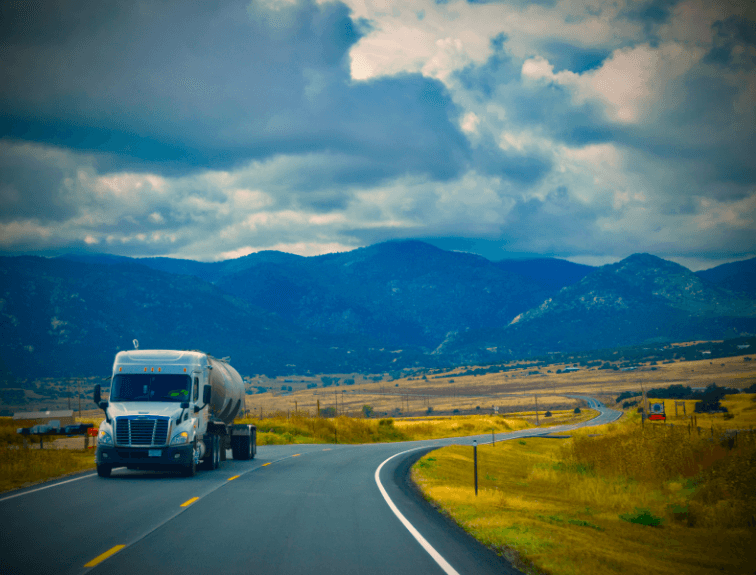When driving as an over-the-road (OTR) driver, truck drivers will come across many different terrains that they will have to know how to handle. The four main landscapes that can take drivers by surprise; mountains, deserts, icy winters, and East coast roads. Professional truck drivers need to prepare themselves and their trucks for each situation.
The following tips explain how to handle each situation safely and like a seasoned pro:
Mountain Driving
Mountain driving is unlike anything other terrain an OTR driver will encounter. It is extremely unpredictable. These tips give an idea of what to expect when tackling the mountains.
- Fuel -Make sure to go into the mountains with more fuel than normally needed. When going up the steeper grades, trucks will be burning more fuel than average. Additionally, weather can suddenly shift and low fuel can be dangerous. Also, gas stations could be 100’s of miles apart in the mountains.
- Weather -When driving at high altitudes, the weather can be very unpredictable. Drivers will have to react to the changing conditions. If the weather may be getting worse, have alternate routes planned just in case.
- Keep brakes cool -Once at the top of the incline, if possible, find a rest area to check over the truck before the descent. This gives the best chance to catch any issues that might happen.
- Extra room -Remember, any vehicle can have issues, so there is no such thing as too much space. Give people as much space as possible.
- Speed and runaway lanes -Going downhill with a trailer at full weight can result in issues on a truck’s brakes. Tip: if the decals on the trailer are visible from the mirrors, use the runaway lanes.
Desert Truck Driving
As an OTR driver, there will be a need to cross a desert to complete a load. Unless drivers grew up in these environments, the desert could be foreign. These tips will make sure they don’t end up stuck in the middle of nowhere.
- Risk of Burns -Many drivers, when making their stops for rest, tend to their trucks as soon as possible. However, doing this without the proper care and protection can lead to first or second-degree burns.
- Cell Service -The deserts of the United States are the second least populated area. The chances of having a good cell signal are slim to none. Make sure to have backup plans that do not rely on cell service if lost or broken down.
- Fuel -Fill-up stations can be few and far between, making it important to be fully fueled up before making the crossing.
- Temperature Shifts -Most of us think of the desert as unbelievably hot. This is all true, but many forget that the desert undergoes extreme temperature shifts ranging from 100+ during the day to freezing at night. If not prepared, drivers and their trucks could face significant issues.
- Maintenance -If the truck breaks down in the desert, drivers will have to face extreme weather as well as help being miles away. That is why we recommend double-checking all oil and coolant levels before entering the desert.
Winter Trucking
Most OTR drivers will encounter Winter driving during their careers. Therefore, knowing these tips could save a driver more time.
- Distance -The road conditions during winter make it perfect for rear-end accidents to happen. Having more space than usual is vital for truck drivers because the stopping distance will be much longer than before.
- Maintenance -Winter maintenance is vital if anything goes wrong. If the truck is stuck, conditions could become deadly quickly. Give a double-check the following systems:
- Tire condition and pressure
- Fuel levels
- Oil and anti-freeze
- 5th wheel grease
- Batteries
- Avoid sudden actions – One of the worst things truck drivers can do when driving on snow and ice is swift, fast movements. If drivers need to stop suddenly, it best to go around.
- Keeping trucks clean – Be sure to regularly clear the snow and ice from both tractor and trailer lights. This helps other drivers see semi-trucks clearly even in low visibility.
For more tips on driving in the winter check out: Tips to Prepare Your Truck for Winter
East Coast Trucking
We have included the East Coast in our list of terrains because it is unlike any other region in the United States for truck drivers. This area is challenging on truck drivers because of the following reasons:
- City Driving -The East Coast has the oldest cities in the United States and most were not designed to support modern trucks and traffic. This can make it hard for drivers to route through these cities without damaging trucks.
- Heavy Winters -When driving on the East Coast, truck drivers have to expect heavy winter weather. That is why we recommend following our winter weather tips from above.
- Older Roads -As mentioned above, the East Coast is an older region when it comes to infrastructure. Therefore, the road system is older and not designed for the traffic demands and height of trucks today.
- Heavy Traffic -The East Coast has some of the most densely populated cities in the United States. This, in turn, results in some of the worst traffic.
- Lack of Parking -Since cities tend to be closer together on the East Coast, the number of places where trucks can park is limited. Drivers may have to search for parking longer than they expected.
When driving the East Coast, the best thing to do is plan ahead and have different options if needed.
At CDS Tractor Trailer Training, we do more than just help our students earn their CDL. We make sure that they are prepared to enter the trucking workforce. With the help of CDS, you can be on the road to a new career in just 4-weeks. Contact us today to learn more about our training programs!

